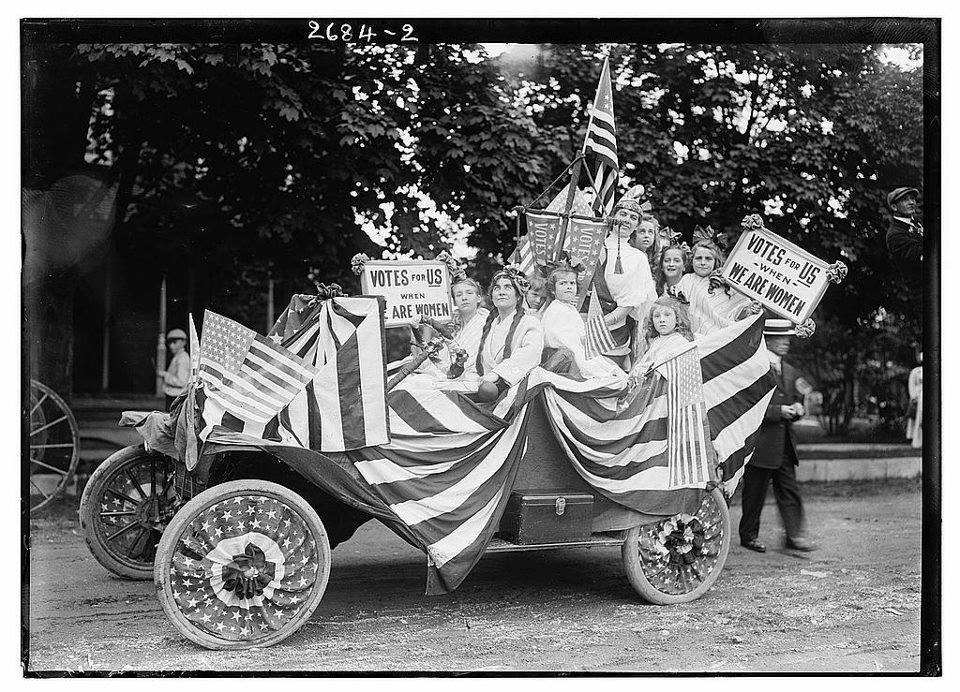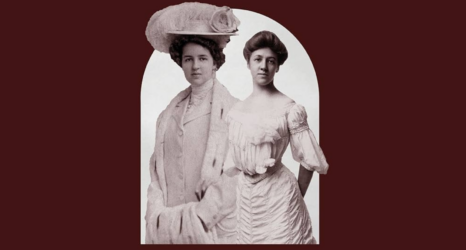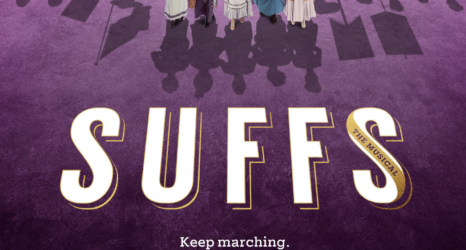
Today in Feminist History is our daily recap of the major milestones and minor advancements that shaped women’s history in the U.S.—from suffrage to Shirley Chisholm and beyond. These posts were written by, and are presented in homage to, our late staff historian and archivist, David Dismore.
May 24, 1913: Though the 500 who took part in Long Island’s first suffrage pageant today may have been fewer in number than the 30,000 “Votes for Women” supporters who paraded down New York’s Fifth Avenue three weeks ago, they seemed every bit as enthusiastic and colorful.

Not content to have a single Grand Marshal, the duties were split between “Suspender Jack” McGee on the ground, and aviator Charlie Hild in the air.
McGee is famous for his impassioned and impromptu speech to the State “Bull Moose” Party convention last September, in which he demolished the party’s carefully planned slate of candidates and got Oscar Straus nominated for Governor. Though Straus came in third, just behind the Republican candidate, he still got 400,000 votes in an election where Democrats took all Statewide offices by a landslide.
But McGee wasn’t the only well-known name to take part today. Also along for the journey from Mineola to Hempstead was Josephine De Mott Robinson. Last year, she organized the women of the Barnum and Bailey Circus for suffrage, and her unique ability to turn a somersault backwards while on horseback made her a natural choice to be prominently featured among the many equestrians.
There were also women dressed in red, white, and blue, carrying shields denoting the nine states where women already have equal suffrage, five of them won between November 1910 and November 1912.
Many floats and flower-bedecked carriages followed the flag-bearers. The silver cup for “Most Effective Vehicle” went to one created by a new convert to the cause. Only a supporter of suffrage for two weeks, Mrs. Lewis of East Hempstead was dressed as Liberty, and accompanied by as many schoolchildren as she could fit in her roofless automobile and under the banner of “Little Twins of Brookholt Branch.” Brookholt is the name of the Long Island estate of Alva Belmont, leader of the Political Equality Association.
The donor of the cup, and keynote speaker at a rally attended by over 5,000 at the end of the parade, was a nationally-known local suffragist, “General” Rosalie Jones. She became a familiar figure to people on Long Island when she traveled around in a suffrage-yellow, horse-drawn cart last summer giving out “Votes for Women” literature and making stump speeches to any who would listen.
Jones achieved Statewide fame when she took a few brave hikers on an unprecedented suffrage march from New York City to Albany between December 16th and 28th of last year, successfully gaining newly-elected Governor Sulzer’s support for a proposed New York State suffrage referendum two and a half years from now. Her success in that effort was followed by nationwide attention when she led suffrage pilgrims (who billed themselves as the “Army of the Hudson,” each of whom was given a military rank) on a trek from Newark, New Jersey, to Washington, D.C., between February 12th and 28th of this year. They then marched in the massive suffrage parade and pageant there on March 3rd.
So enthusiastic are local suffrage supporters that the last of the speeches was not the end of the day’s activities. Three “flying squads” of suffragists are now driving their automobiles around the area promoting the cause to anyone who may have missed the parade and rally. Jessie Hardy Stubbs is in charge of Hempstead, Elizabeth Freeman is in Rockville Center, and May Morgan is converting Sea Cliff residents as our campaign for suffrage in the Empire State rolls on with the same renewed vigor here that it has experienced nationwide.





